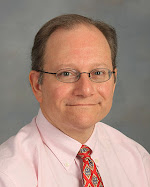Big Mound City is one of the largest prehistoric mound sites in Florida, if not in the whole southeast. It's poorly known and quite inaccessible. There are two ways to get there. From the west, you can drive to within about 500 m of the site, but that last half kilometer is a doozy. It's a four-foot deep swamp full of alligators and water moccasins. From the east, it's over 20 km down a muddy road that can only be traversed in a giant mud buggy with 2 m high tires. The first time I went, in 2008, we came in from the west and it was mortally exhausting. The next time, we took the mud buggy. The isolation may have helped preserve the site (it's hard to get there, which limits the mischief), but it also leaves it vulnerable to those who do manage to get there, who seem to be mostly 3- and 4-wheel ATV enthusiasts and hunters. We saw little evidence of purposeful or effective looting, but plenty of destruction was visible. It has come from culling trees, off-roading, and, most significant, rooting and wallowing by herds of feral hogs. The latter is shockingly deleterious for archaeological deposits because it completely disturbs the top layer of soil, down perhaps 30 or 40 cm over large areas. Here are pictures from the first trip.
 |
| Ruins of a hut on one of the mounds |
 |
| Recently (2008) felled large trees on the mounds |
 |
| Feral hog rooting |
 |
| More feral hog rooting |
 |
| Yet more feral hog rooting |
Here are pictures from the second trip, in 2011. This is in winter, in December. With the wind from the mud buggy, I was actually very cold. It's the only time I can remember being cold in Palm Beach County, Florida.
 |
| Mound in winter |
 |
| Big mound covered with palmetto |
 |
| Mound |
The site deserves intensive archaeological investigation. It has great potential for tourism, but access would have to be created, though that would not be particularly difficult. Before the site could be opened for tourism, we would have to do some archaeology, if only to provide sensible interpretation. The site needs to be properly mapped and dated. It sure would be nice to know about the functions of the mounds and the causeways connecting them. There may also be a charnel pond there that ought to be located and properly protected and conserved.
The feral hogs need to be controlled. The site is located within a large state wildlife management facility. The hogs can be shot during the appropriate interval of hunting season. We probably need to do that. Don't ask me who "we" is.
(I started this blog post in April 2011. I just finished it after having noted a draft post languishing in cyber-oblivion.)









How discouraging. I would so like to see this place!
ReplyDelete